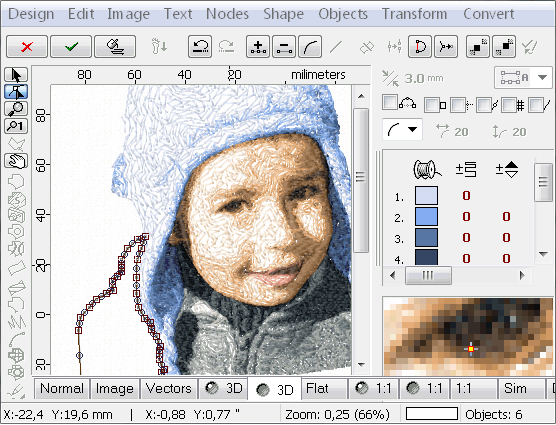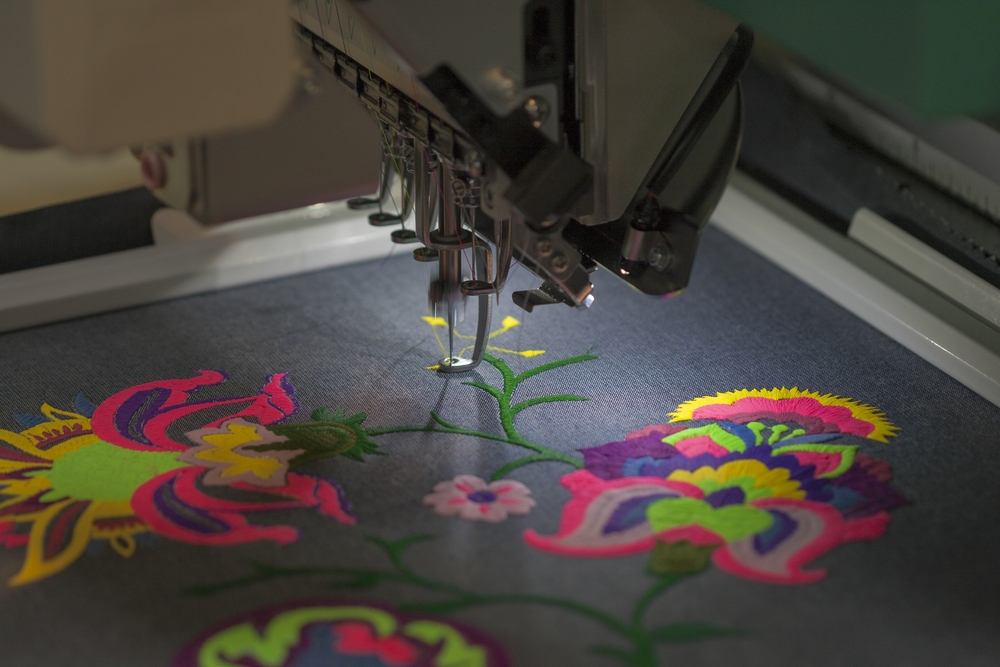Comprehensive Digitizing for Embroidery: From Style to Sew
Comprehensive Digitizing for Embroidery: From Style to Sew
Blog Article
Understanding the Embroidery Digitizing Process: Your Ultimate Guide
Needlework digitizing is a thorough craft that needs accuracy and experience to convert elaborate designs right into electronic layouts for maker embroidery. As craftsmens get started on this journey to grasp the needlework digitizing process, a thorough understanding of the basics establishes the foundation for excellence.

Understanding Needlework Digitizing Fundamentals
Embroidery digitizing basics develop the foundation whereupon elaborate styles are converted right into machine-readable formats for accurate stitching. This preliminary action in the embroidery digitizing process is important for ensuring that the last embroidered product is a loyal representation of the original layout. Understanding needlework digitizing fundamentals entails comprehending vital ideas such as stitch types, stitch direction, density, rug, and pull settlement.
Stitch types play a vital duty in figuring out the aesthetic and textural outcome of the stitched design. By choosing the appropriate stitch type, whether it be satin, fill, or running stitch, digitizers can accomplish the wanted impact and boost the total quality of the needlework. In addition, stitch instructions affects the flow and dimension of the style, while density determines the spacing and insurance coverage of the stitches.
In addition, padding sewing supplies security to the design by safeguarding the textile and avoiding distortion throughout the needlework process. Pull payment is another necessary factor to consider to counteract the all-natural tendency of fabric to contract when stitched. Mastering these needlework digitizing fundamentals is essential for creating professional-quality embroidered products.
Selecting the Right Digitizing Software Application
Picking the appropriate digitizing software application is an important choice that dramatically affects the performance and high quality of the needlework digitizing process. Digitizing for Embroidery. When choosing the ideal digitizing software application, it is vital to take into consideration aspects such as the complexity of styles you prepare to produce, the user-friendliness of the software program, the level of client support provided, and the compatibility with your needlework maker
There are different digitizing software program choices offered on the market, varying from fundamental programs for novices to advanced software program for specialist digitizers. Some popular options consist of Wilcom EmbroideryStudio, Hatch Needlework Software Application, and PulseID. These software application packages use a vast range of tools and features to assist you produce elaborate designs effortlessly.
Before making a choice, it is suggested to explore the various software program options through cost-free trials or trials to determine which one ideal suits your demands. Additionally, reading testimonials and looking for suggestions from experienced digitizers can supply important insights right into the toughness and weak points of each software (Digitizing for Embroidery). By carefully reviewing your needs and comparing the attributes of various digitizing software program, you can make an enlightened selection that boosts your embroidery digitizing workflow
Digitizing Devices and Methods

Optimizing Design Settings for Embroidery
Grasping the intricacies of style setups is fundamental in attaining optimal outcomes in the needlework digitizing procedure, structure upon the foundation laid by recognizing digitizing devices and techniques. When enhancing layout settings for embroidery, it is necessary to take into consideration factors such as stitch type, density, underlay, pull payment, and enrollment. Enrollment settings line up different elements of the layout accurately, maintaining overall layout stability.

Troubleshooting Common Digitizing Issues
When running into common digitizing problems during the embroidery procedure, it is necessary to recognize the source and carry out effective services immediately. One usual issue is stitch density concerns, where stitches might be as well dense, triggering the textile to pucker, or too sparse, resulting in voids in the style. Adjusting the stitch density settings in the digitizing software can aid solve this problem.
An additional frequent obstacle is string breaks during the embroidery process. This can happen due to numerous reasons such as wrong tension settings, dull needles, or utilizing low-quality string. Making certain basics proper upkeep of the needlework maker, consisting of routine needle changes and stress changes, can decrease the occurrence of thread breaks.
Additionally, design registration errors can directory result in misaligned aspects within the embroidery layout. Checking the design alignment in the digitizing software application and making essential adjustments before sewing can assist in avoiding this issue. By attending to these typical digitizing concerns immediately and properly, you can make sure a smoother needlework process and top notch ended up products.
Conclusion
In verdict, understanding the embroidery digitizing procedure requires a solid understanding of the fundamentals, the best choice of software program, and knowledge of devices and methods. Optimizing layout setups and fixing common digitizing issues are crucial action in making sure top quality embroidery outcomes. By complying with these actions diligently, one can accomplish accuracy and efficiency in the digitizing process.
Report this page